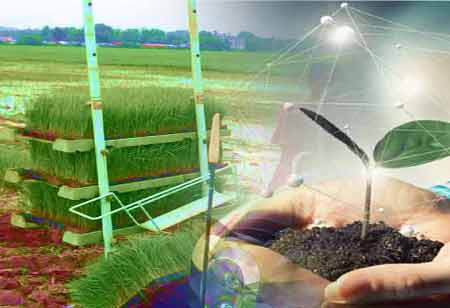Thank you for Subscribing to Agri Business Review Weekly Brief
Unveiling the Downsides of Modern Agriculture
The agriculture industry finds itself at a critical juncture, grappling with a range of pressing issues.

By
Agri Business Review | Wednesday, November 08, 2023
Stay ahead of the industry with exclusive feature stories on the top companies, expert insights and the latest news delivered straight to your inbox. Subscribe today.
While modern agriculture has seen numerous technological and agtech innovations, it also comes with its fair share of drawbacks. These cons encompass environmental pollution, health concerns, overgrazing, disease spread, and land mismanagement, casting a shadow on the otherwise vital industry.
Fremont, CA - The agriculture industry finds itself at a critical juncture, grappling with a range of pressing issues. Challenges include the escalation of supplier prices, a shortage of skilled labor, and evolving consumer demands for sustainability and transparency. Agriculture companies are increasingly recognizing the urgency of finding solutions to these problems.
Agritech, the integration of technological innovation to enhance agricultural processes, plays a pivotal role in addressing these challenges. However, while modern agriculture benefits from numerous technological advancements, it also carries several drawbacks that deserve attention. This article explores the cons associated with contemporary agricultural practices, shedding light on areas of concern that need to be addressed.
Environmental Pollution
Environmental pollution can result from new agricultural technologies. For instance, farmers who misuse pesticides and fertilizers risk harming groundwater supplies. Furthermore, the production of agricultural equipment usually demands the use of harmful chemicals and materials.
Health Issues
Uncontrolled chemicals can affect land, water, and air, making daily living more challenging for ordinary people. While contaminated air can lead to respiratory issues, dirty water can be dangerous for people and animals since it can spread waterborne illnesses.
Death is quite likely to follow intoxication from dissolved substances. Senior citizens, young children, and those who have trouble breathing are particularly vulnerable to the dangers of air pollution. If they breathe polluted air, their health might deteriorate or perhaps end in death, endangering their lives.
Furthermore, people's health may be at risk if herbicides and pesticides come into contact with their skin while spraying plants or animals. This might cause a burning sensation and possible skin damage.
Overgrazing
The production of beef and dairy products might harm grassland. Since most people seek to maximize financial gain, they resort to overgrazing for increased milk and meat production, exhausting the pasture and exposing the land to soil-eroding agents.
Nutrient levels in eroded soils are minimal, providing inadequate support for plant growth. Overgrazing endangers the ecology because it makes semi-arid areas more dry. Semi-aridity alters the equilibrium and endangers people, water supplies, and other animals by exposing them to unregulated soil dust, which pollutes water sources and makes them unsafe for consumption.
The Spread of Disease
Some diseases are easily transferred from animals to humans. Consuming infected animal products like milk and meat is one of the many ways these diseases are transmitted. If consumers are not thoroughly examined, they risk developing severe health issues. This circumstance is unsurprising considering the nature of illnesses like COVID-19, swine flu, and others brought on by ingesting toxic food.
Land Misuse
Food and nutrition are essential for humans. The need for food increases with the population, prompting agricultural managers to develop unconventional methods to produce an increasing amount. More land is consequently needed to accommodate humanity's ever-increasing needs, leading to deforestation and specific communities' migration. Deforestation affects the environment and increases greenhouse gas emissions. The once-forested area of the land has been turned into an agricultural area. Additionally, certain crops are grown in unsuitable places, increasing land usage.





